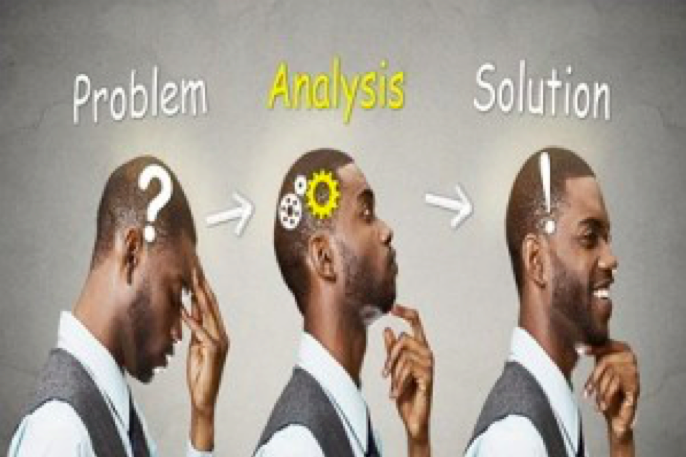You versus Problems, how? The boxing match!

By Dr. Sridhar Bakhale, in Freepress Journal, Dec 13, 2015
DR SHRIRANG BAKHLE says that by acquiring the calm and happy mindset, we can tackle the problems better and not allow the problems to damage our mind.
(Note: “Never trouble trouble until trouble troubles you.” If they still come what will you do? Here is the advise for you. Go for a two-way boxing match. Actually it is dialogue with yourself in your mind, a battle  that happens in the mind only. Hence the writer says: “One half of this boxing match is what we do to the problem: Solve the problem, or at least reduce the severity and take steps to ensure that the problem does not recur in future.” Find out first if you are a calm person or an emotional person. The happy person is in between. He will emerge when the battle of wits – boxing match — ends. james kottoor, editor)
that happens in the mind only. Hence the writer says: “One half of this boxing match is what we do to the problem: Solve the problem, or at least reduce the severity and take steps to ensure that the problem does not recur in future.” Find out first if you are a calm person or an emotional person. The happy person is in between. He will emerge when the battle of wits – boxing match — ends. james kottoor, editor)
Everybody is generally happy. But the problem comes when a problem comes! And then the boxing match starts. This is a two-way match: we try to overpower and solve the problem. At the same time, the problem can harm us, make us unhappy. The problem can be anything: fear of failure in exam, financial problems, career dissatisfaction, interpersonal problems, sickness or death in the family etc.
So, what is the final outcome? Do we come out happy and strong or do we end up being unhappy (sad, fearful or angry)? It is important to recognize that most of this battle happens in our mind. And the final outcome – happiness or unhappiness – happens in the mind, too. Hence, by understanding the dynamics, we can determine the outcome.
Simple logic tells us that if we solve the problem, we will become happy. And if we are unable to solve the problem, we will become unhappy. But this isn’t always the case. Suppose, someone insults you. If the person admits the mistake and apologizes, you will become happy. If the person does not do this, you will remain unhappy. Is it so? Not always. It is possible that even if the person apologizes, you may keep remembering the unhappiness and remain unhappy for a long time. It is also possible that even if the person does not apologize, you can remain strong and get on with your life happily.
One half of this boxing match is what we do to the problem: Solve the problem, or at least reduce the severity and take steps to ensure that the problem does not recur in future.
You must have observed that some people are better at solving problems than others – problems such as exams, interpersonal problems etc. What is the difference between these two groups of people? Is it the physical strength – the size of the biceps? No. The difference is in the mindset – the attributes of the mind. If we understand these abilities, we can learn them.
The most important ability is remaining calm in the middle of problem situations. Whenever we realize that we have a problem, the first reaction is that we become unhappy – sad, fearful, angry. For example, when a student realizes that he may not do well in an exam, the first reaction is fear. However we see many students who remain anxious for a long time – and are unable to concentrate on studies. This worsens the situation, increasing the chances of doing poorly in the exam. Hence, the first step in solving a problem is to become calm.
It is easier said than done. But it can be done. There are various techniques for removing the negative emotions; techniques that can be learnt. We will discuss them in future articles in this series.
A calm mind offers several advantages: it can think of more facets of the situation whereas the emotional mind can hold only a few facets. For example, while tackling interpersonal problems, the calm mind can think of many related events, people and different options – before deciding on an action plan. The emotional person takes decisions based on few emotional facets and hence has a less chance of tackling the problems well.
The calm person has more patience while the emotional person rushes into actions. For example, a young child is having difficulties while learning to do some activity (such as tying shoe laces). The calm person will patiently observe and teach the child. The emotional person will have an emotional outburst quickly.
The calm person has better empathy. The emotional person’s mind is so clouded by the emotions that he cannot perceive what is going on in other people’s minds. Hence the calm person can tackle interpersonal problems better.
The other half of the boxing match is what the problem does to you. Sometimes the problem leaves the emotionally shaken – even if the problem gets solved. For example, a person may face the possibility of losing his job. This experience may make the person fearful or bitter – even if he manages to retain the job. This typically happens if the person keeps on brooding about the unpleasant experiences.
The person with the happy mindset understands that problems are a part of every person’s life and that they are to be taken in the stride. So this person tries to learn from the problem, is happy that the problem is solved and then gets on with the life. Even if the problem is unsolvable (e.g. death of a dear one), the calm person overcomes the distress and gets back to living a productive life.
So, by acquiring the calm and happy mindset, we can tackle the problems better and not allow the problems to damage our mind.
















